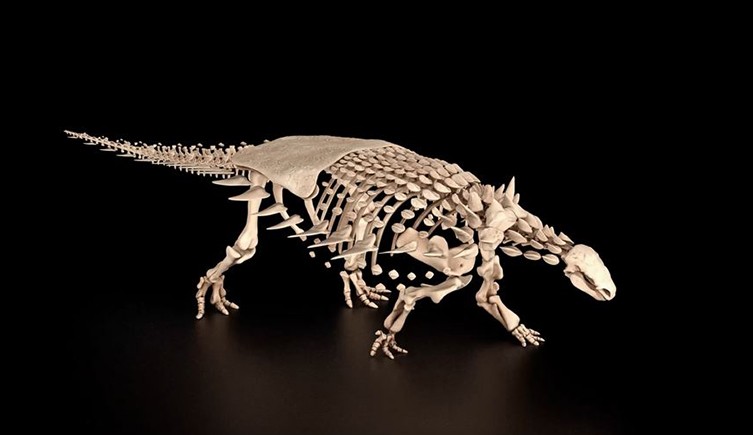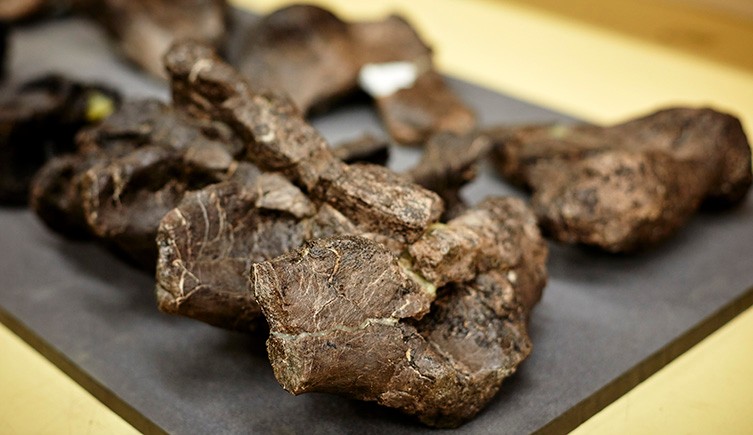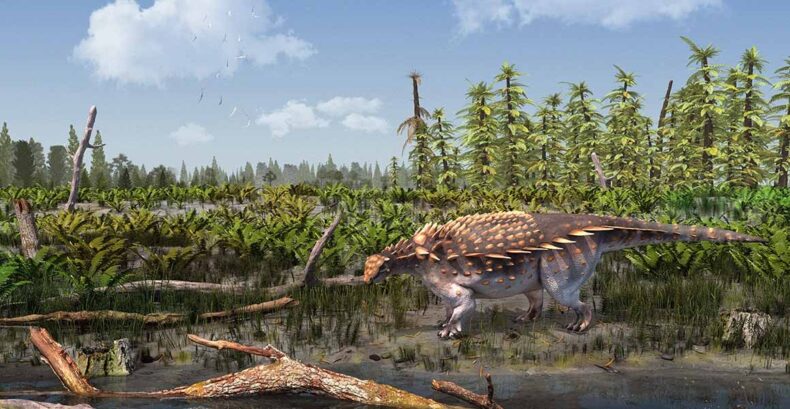A new species of armoured dinosaur were found on the Isle of Wight, an island off the south coast of England.
These herbivores with blade- like armor is named Vectipelta baretti.
The name was given in honour of Prof Paul Barret. He has worked at the Natural History Museum in London for 20 years and has published 220 scientific papers. He said that he was flattered and absolutely delighted to have been recognized this way. The first paper he wrote was also on an armoured dinosaur. The dinosaur belongs to the family ankylosaurs. A species- Polacanthus foxii– belonging to the same family had been discovered on the island in 1865. However, according to the scientists, they were not very closely related. The recently found species have a different neck, back, pelvic bones and a more spiked armour.

Findings show that Vectipelta baretti were more closely related to dinosaurs of the same family discovered in China. This suggests movement of dinosaurs from Asia to Europe in early cretaceous (from 145 to 100.5 million years ago).

The new finding will trigger reanalysis of similar fossil remains which had been assumed to be Polacanthus foxii till now.
Dinosaur rich Isle of Wight
Isle of Wight is rich with dinosaur fossils. 29 different species of dinosaur from various prehistoric periods were found here. Over 20 species of the dinosaur recognized belongs to early Cretaceous (particularly from 132 to 110 million years ago).
During the cretaceous period, island was located on latitude as of North Africa today. It would have had subtropical climate and would have been part of a large river system.
The Wessex formation and Isle of Wight are important to get answers regarding mass extinction during Jurassic and recovery of life afterwards.













